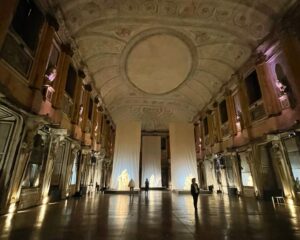
Since Rome defeated Greek, its art and architecture were influenced robustly by the culture of Greece. It explains why much of the architecture around historical sites in Rome has the thick character of ancient Greek architecture. For example, those buildings’ columns contain three different columns: the Doric, the ionic, and the Corinthian. The doric has the most uncomplicated design on the top; it is very plain and kind of like a half-circle. The ionic has scrolls on both sides; there are four spirals, two in the front and two in the back. The next one is the most decorative – the Corinthian, which looks like an ornament with leaves and some flowers.
Due to their richness, Corinthian columns are rarely employed as typical porch pillars for the average household. The design is better suited to public structures like courts and palaces in Greek Renaissance architecture. The following are features of Corinthian columns: curved (fluted) shaft; the capitals, which are the crowns of every column, are embellished with acanthus leaves, flowers, and even tiny scrolls (Craven, 2020). Capital decorations with bell-like flares project outwardly to give the impression of grandeur. The altitude of their capitals provides them substantially a deeper and more streamlined appearance than Ionic columns, according to Vitruvius (Craven, 2020).
Until today, we have seen how Greek culture influences western culture, such as in Italy, Spain, Poland, and many other European Countries until other continents, such as Australia and America. It is because all of it represents superiority. Some western buildings designed with this classic style in Washington, D.C., such as the U.S. Supreme Court Building, the National Archives Building, and the U.S. Capitol. These three buildings represent where the power lies in America; hence the architecture tried to pursue it through the classical style that emphasizes great wealth and luxuriousness (Crave, 2020).
When we take closer look to the U.S. Supreme Court, built by architect Cass Gilbert who decided to adopt the classical style from ancient Greek architecture (Craven, 2021). The design of the building represents its duties metaphorically, and many of the architectural features at the pediment of the west facade, main entrance, contemplation of justice sculpture, guardian of law sculpture, east hall, and the court chamber. The Neoclassical architectural style was picked to express democratic principles. The statue depicts classical emblems of righteousness from the inside out and conveys stories of compassion. Marble is a traditional stone of durability and beauty (Khan Academy, n.d.).
It is apparent that the primary intention of choosing the classical style goes along with the function of the building. Consider the U.S. Supreme Court was meant to emphasize its charisma and ability to get attention with its luxuries of power. The architect successfully makes a statement through each part of the architectural design. For example, the classical style of the statue of contemplation of justice implemented a complex expression like the one that contains a lot of emotions and action. West pediment also represents the purpose of implementing the classical style in the architecture of this building through the Vermont marble sculpture. From left to right, it symbolizes each figure that represents the present, the establisher of the U.S. Commission fine arts, Cass Gilbert – the architect, “the three central figures (Order, Liberty Enthroned, and Authority),” chief of justice, its sculptor – Robert Aitken, and the past figure – Chief Justice John Marshall (Crave, 2021, para. 9).
Reference:
Craven, J. (2021, September 1). About the U.S. Supreme Court Building. ThoughtCo. https://www.thoughtco.com/us-supreme-court-building-by-cass-gilbert-177925
Craven, J. (2020, October 29). The History of Corinthian Columns. ThoughtCo. https://www.thoughtco.com/what-is-a-corinthian-column-177504
(n.d.).
Khan Academy. (n.d.). Ancient Greek and Roman art [Video]. https://www.khanacademy.org/humanities/approaches-to-art-history/very-beginner/ancient-medieval-art/v/greek-and-roman-art







